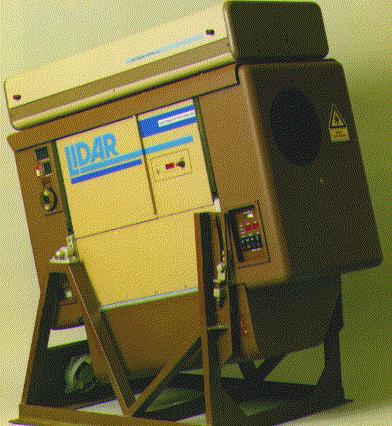| Experiments of the Lidar Laboratory | |||||
|---|---|---|---|---|---|
| Symbol | Date | Description | Lidar-Aer | Lidar-Chl | Lidar-Flu |
| HEL'92 | October 1992 | Baltic Shore Experiment at Hel Peninsula | Yes | No | No |
| BAEX-1 | October 1993 | International Shore Experiment in Lubiatowo | Yes | No | No |
| HEL'93 | November 1993 | Baltic Shore Experiment at Hel Peninsula | Yes | No | No |
| HEL'94(1) | January 1994 | Baltic Shore Experiment at Hel Peninsula | Yes | No | No |
| MAY94 | May 1994 | R/V Oceania Cruise in South Baltic | Yes | Yes | No |
| HEL'94(2) | June 1994 | Baltic Shore Experiment at Hel Peninsula | Yes | No | No |
| MOLO | September 1994 | Baltic Shore Experiment in Sopot, Poland | Yes | No | No |
| BAEX-2 | September 1994 | International Shore Experiment in Lubiatowo | Yes | No | No |
| NOV94 | November 1994 | R/V Oceania Cruise in South Baltic | Yes | Yes | No |
| HEL'94(3) | November 1994 | Baltic Shore Experiment at Hel Peninsula | Yes | No | No |
| HEL'95 | February 1995 | Baltic Shore Experiment at Hel Peninsula | Yes | No | No |
| MAR95 | March 1995 | R/V Oceania Cruise in South Baltic | Yes | Yes | No |
| CETN'95 | May 1995 | Baltic Shore Experiment in Cetniewo | Yes | No | No |
| JUN95 | June 1995 | R/V Oceania Cruise in South Baltic | Yes | Yes | No |
| BAEX-3 | September 1995 | International Shore Experiment in Lubiatowo | Yes | No | No |
| OCT95 | October 1995 | R/V Oceania Cruise in South Baltic | No | Yes | No |
| MAR96 | March 1996 | R/V Oceania Cruise in South Baltic | No | Yes | Yes |
| APR96 | April 1996 | R/V Oceania Cruise in South Baltic | No | Yes | Yes |
| MAY96 | May 1996 | R/V Oceania Cruise in South Baltic | No | Yes | Yes |

Aerosol concentration: total number of suspended particles in volume unit of air. Measured every 7.5 m along the optical path of lidar impulse. The measurement is not direct: the value measured directly is the backscattered signal and output energy of the laser for several wavelengths (laser lines). Backscattered signal for a few wavelengths allows for the solution of the inverse lidar problem to get the concentration and rogue shape of concentration size distribution.
Spectra of sea-water fluorescence: emitted spectra of fluorescence of sea-water and Raman bands measured with the lidar system (1024 spectral canals). The sea surface is illuminated with a laser beam at a chlorophyll "a" absorption band. The ratio of the integrals of the chlorophyll "a" emission band to the Raman band allows the calculation of a relative index of chlorophyll fluorescnce. This index, when calibrated with chlorophyll "a" concentration values measured with the classic spectrophotometric method for some neighbouring stations, allows practically continuing measurement of chlorophyll "a" concentration. The concentration is a weighted average for surface water (with light transmission to the depth at laser wavelength used as the weight).
Index of sea-surface oil fluorescence: The index is calculated from the emitted spectra of fluorescence of sea-water and Raman bands measured with the lidar system which are used also for chlorophyll concentration studies. The value of the index is a weighted average for surface water (with light transmission to the depth at laser wavelength used as the weight). By dividing the fluorescence spectrum into bands of the fluorescent substance and backscattered water Raman one obtains the fluorescent coefficient of the oil (fluorescent substance). This expression mainly depends on the oil (fluorescent substance) concentration and is independent on many parameters as: laser power, distance from the object and sensor efficiency coefficients which are the same for both of bands. In this way we can determine the fluorescent coefficient of the oil which is the measure of the oil concentration.
Lidar System FLS-12 uses excimer laser ELI-130 to pump a dye laser DL_LIDAR as the light source, a 280 mm telescope with a polychromator and two receiver cameras (A and B) as the receiver. The parameters of the optical system are:
The lidar system has two receiver blocks:
 |
Written by Jacek Piskozub <piskozub@iopan.gda.pl> , Last updated April 22, 2002